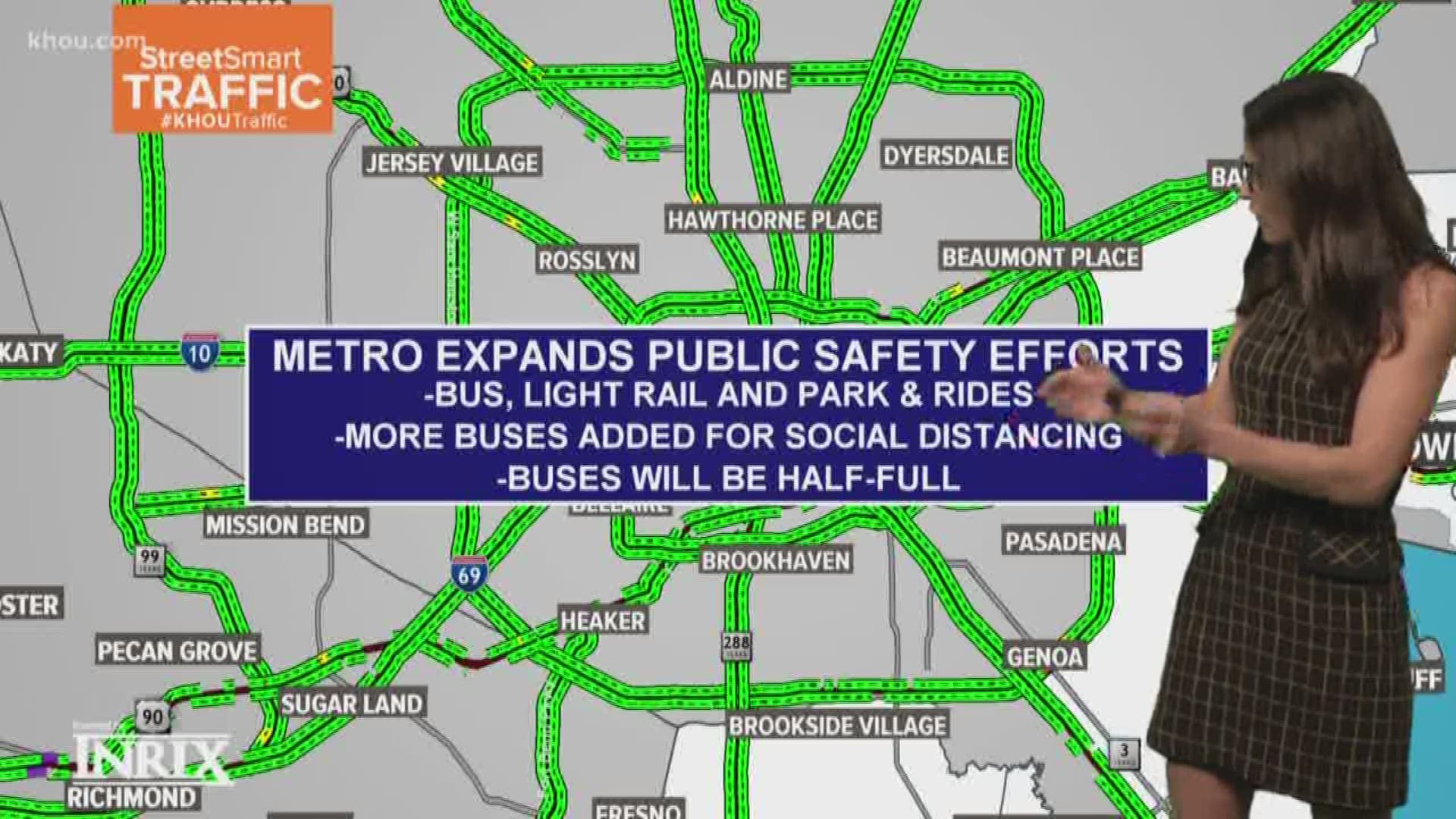HOUSTON — METRO announced all bus and rail routes remain in service this week and more buses will be put in service on heavily traveled routes in order to lessen crowding.
Here is what they are doing to help stop the spread of the coronavirus:
- More buses will be put in service on heavily traveled local routes in order to lessen crowding
- Approximately 50 percent fewer seats will be available on buses
- There will be fewer available seats on light rail and METROLift as well
These additional safety measures may result in delays on certain routes. Please plan accordingly, including adjustment of your travel schedule.
METRO also said, during this time, expected arrival times shown in METRO's TRIP app and Next Bus Arrival Texting may not be accurate.
Officials recommended to stay informed by subscribing to receive service alerts for the route(s) of your choice.
As always, METRO Customer Service can be reached at 713-635-4000.
In addition to the steps above, the Authority will continue:
- Putting an even greater emphasis on disinfecting surfaces frequently touched by the public during our daily bus and rail cleaning
- Displaying posters along the system reminding riders of public health officials' recommendations to stop the spread of germs
- Communicating safety messages on service alerts
- Remaining in close and continuous communication with local public health and emergency management officials to monitor developments
- Evaluating the threat of this virus and responding appropriately
- Providing service, and doing so safely
Coronavirus symptoms
The symptoms of coronavirus can be similar to the flu or a bad cold. Symptoms include a fever, cough and shortness of breath, according to the Centers for Disease Control.
Most healthy people will have mild symptoms. A study of more than 72,000 patients by the Centers for Disease Control in China showed 80 percent of the cases there were mild.
But infections can cause pneumonia, severe acute respiratory syndrome, kidney failure and even death, according to the World Health Organization. Older people with underlying health conditions are most at risk.
The CDC believes symptoms may appear anywhere from two to 14 days after being exposed.
Human coronaviruses are usually spread through...
- The air by coughing or sneezing
- Close personal contact, such as touching or shaking hands
- Touching an object or surface with the virus on it, then touching your mouth, nose or eyes before washing your hands.
Help stop the spread of coronavirus
- Stay home when you are sick.
- Eat and sleep separately from your family members
- Use different utensils and dishes
- Cover your cough or sneeze with your arm, not your hand.
- If you use a tissue, throw it in the trash.
Lower your risk
- Wash your hands often with soap and water for at least 20 seconds. If soap and water are not available, use an alcohol-based hand sanitizer.
- Avoid touching your eyes, nose, and mouth with unwashed hands.
- Avoid close contact with people who are sick.
- Clean and disinfect frequently touched objects and surfaces.
- If you are 60 or over and have an underlying health condition such as cardiovascular disease, diabetes or respiratory illnesses like asthma or COPD, the World Health Organization advises you to try to avoid crowds or places where you might interact with people who are sick.
Get complete coverage of the coronavirus by texting 'FACTS' to 713-526-1111.
MORE ON CORONAVIRUS

